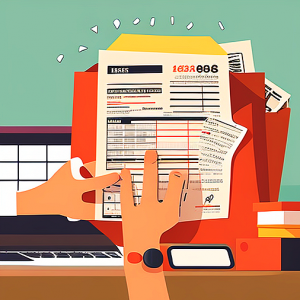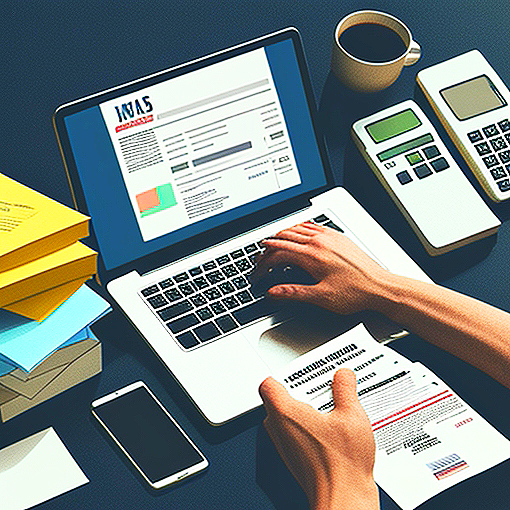Starting a Successful Sole Proprietorship: A Complete Guide for Company Owners
When starting a business, one of the decisions that entrepreneurs need to make is the type of business structure to choose. One of the most popular options is the sole proprietorship. It’s a business structure where the owner and the business are considered the same entity, and the owner is responsible for all the liabilities and debts of the business. In this article, we’ll discuss everything you need to know about a sole proprietorship, its advantages and disadvantages, and how to set up one.

What is a Sole Proprietorship?
A sole proprietorship is a business structure that is owned and operated by one person. This type of business doesn’t require any formal registration with the state, and the owner has complete control over the business. The business owner is also personally responsible for all the liabilities and debts of the business.
Also Read :- Company – Structures, Types, and Challenges: A Comprehensive Guide to Running a Successful Company
Advantages of a Sole Proprietorship
- Easy to Set Up: Setting up a sole proprietorship is relatively easy and doesn’t require any formal paperwork. All you need is to start doing business, and you’re good to go.
- Complete Control: As the sole owner of the business, you have complete control over all the decisions and operations of the business. You don’t have to consult with anyone or seek approval before making any decisions.
- Tax Benefits: As a sole proprietor, you can deduct all the business expenses from your personal income tax returns, reducing your taxable income.
- Flexibility: Sole proprietors have the flexibility to change the business structure or dissolve the business at any time.

Disadvantages of a Sole Proprietorship
- Unlimited Liability: The biggest disadvantage of a sole proprietorship is that the owner has unlimited personal liability for all the debts and liabilities of the business. This means that if the business incurs any debts or lawsuits, the owner’s personal assets are at risk.
- Limited Resources: As a sole proprietor, you may have limited resources, which may hinder the growth and expansion of your business.
- Difficulty in Raising Capital: Sole proprietors may find it challenging to raise capital from investors or lenders, as they may not have the necessary collateral or business structure to secure loans.
Also Read :- Sundar Pichai : Inspirational Biography, Education, Family and Unexpected Salary of $2M+
How to Set Up a Sole Proprietorship
Setting up a sole proprietorship is relatively easy and doesn’t require any formal registration with the state. However, you may need to obtain licenses and permits to operate your business, depending on the nature of your business and your location. Here are the steps to set up a sole proprietorship:
- Choose a Business Name: You can choose any name for your business as long as it’s not already in use by another business.
- Obtain Business Licenses and Permits: Depending on your location and the nature of your business, you may need to obtain licenses and permits from the state or local government.
- Obtain an EIN: Although not required, it’s recommended that sole proprietors obtain an Employer Identification Number (EIN) from the IRS. This will allow you to open a business bank account and hire employees in the future.
- Open a Business Bank Account: It’s essential to keep your personal and business finances separate. Opening a business bank account will help you keep track of your business income and expenses.
- Register for Taxes: Sole proprietors are required to file a Schedule C with their personal income tax returns. You may also be required to collect and remit sales tax if your business sells taxable goods or services.
Conclusion
A sole proprietorship is a popular business structure for entrepreneurs who want to start a business with minimal formalities and paperwork. While it has its advantages, such as ease of set up, complete control, and tax benefits, it also has its disadvantages, such as unlimited liability and limited resources. If you’re considering setting up a sole proprietorship, it’s important to weigh the pros and cons and determine if this is the right business structure for you. If you decide to go ahead with a sole proprietorship, make sure to follow the steps outlined above to set up your business properly.

In addition to the steps mentioned above, there are a few other things you should consider when setting up a sole proprietorship. One of the most important is getting the right insurance coverage. Since you are personally liable for all the debts and liabilities of the business, it’s crucial to have adequate insurance coverage to protect yourself and your assets.
Another consideration is keeping good financial records. As a sole proprietor, you’ll need to keep track of all your business income and expenses for tax purposes. Make sure to keep all receipts and invoices, and use accounting software or hire a bookkeeper to help you keep track of your finances.
Also Read :- Mahatma Gandhi: Inspiring a Movement for Change
Finally, it’s important to stay up to date with any changes in the law that may affect your business. This includes changes to tax laws, labor laws, and any regulations that may apply to your industry.
In conclusion, setting up a sole proprietorship can be a great option for entrepreneurs who want to start a business quickly and easily. While it has its drawbacks, it also has its benefits, such as complete control over the business and tax benefits. If you’re considering setting up a sole proprietorship, make sure to do your research, weigh the pros and cons, and follow the steps outlined above to set up your business properly.

